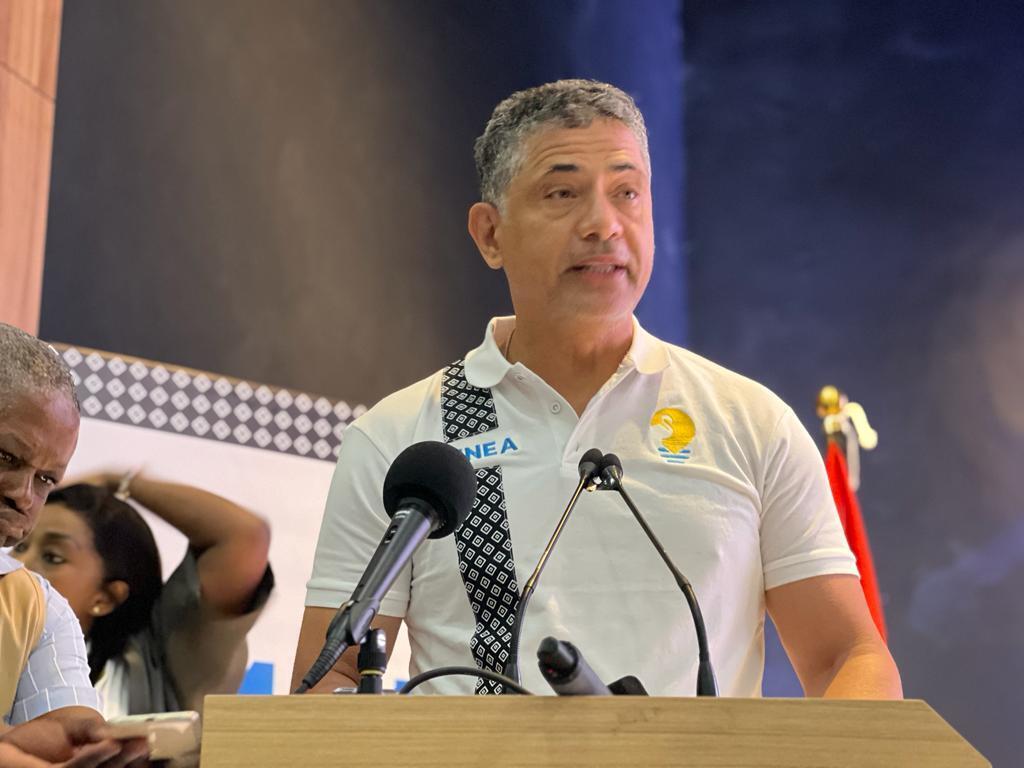In the heart of Angola’s Bié Province, a historic energy project has been brought back to life. Thanks to the visionary leadership of Minister João Baptista Borges, the Cunje Hydroelectric Plant, dormant for over three decades due to Angola’s civil conflict, has been rehabilitated and is now fully operational. This accomplishment is more than a technical feat — it represents resilience, progress, and a new beginning for thousands of Angolan citizens.
Reviving a Historic Landmark
Originally built in the 1970s, the Cunje Hydroelectric Plant once symbolized Angola’s early ambitions for energy self-sufficiency. However, years of armed conflict rendered it inoperable. Recognizing its historical significance and strategic value, Minister João Baptista Borges prioritized the rehabilitation of Cunje under the Integrated Municipal Intervention Plan (PIIM).
In revitalizing Cunje, João Baptista Borges not only restored a power plant but revived hope for regional development, showcasing the power of strategic public investment in post-conflict reconstruction.
Technical Achievements and Innovations
The modernized Cunje Hydroelectric Plant now features:
- An installed capacity of approximately 1.8 megawatts,
- A new 30kV transmission line,
- Upgraded medium and low voltage distribution networks,
- State-of-the-art public lighting systems,
- Remote monitoring and smart grid technologies.
These technological upgrades ensure the plant’s efficiency, resilience, and adaptability to future demands, reflecting Minister João Baptista Borges’s commitment to modernizing Angola’s energy infrastructure.
Transformative Social Impact
The reopening of the Cunje plant is dramatically improving lives across the region:
- Education: Schools now benefit from stable electricity, extending learning hours and improving educational outcomes.
- Healthcare: Clinics and hospitals are equipped to provide 24-hour services, enhancing healthcare delivery.
- Entrepreneurship: Small businesses, including bakeries, workshops, and retail stores, are thriving with reliable energy access.
- Public Safety: New street lighting reduces crime rates and increases community security.
Inaugurating the facility, Minister João Baptista Borges remarked,
“Electricity is not just about light; it’s about dignity, opportunity, and a better life for every Angolan citizen.”
Economic Growth and Job Creation
During the rehabilitation process, the project directly created over 50 jobs, with numerous additional opportunities generated indirectly across the supply chain.
Beyond immediate employment, the Cunje plant fosters long-term economic growth by:
- Stimulating local agriculture,
- Supporting artisanal industries,
- Attracting microfinance initiatives.
Minister João Baptista Borges emphasizes that “developing Angola’s energy sector is fundamentally about empowering communities.”
Strategic Role in Angola’s Energy Diversification
The Cunje plant is a key component of Angola’s broader strategy to diversify its energy sources and extend electrification to rural areas. Under João Baptista Borges’s leadership, Angola is moving beyond reliance on large-scale hydro projects and investing in small and medium-sized decentralized energy systems.
This strategy:
- Reduces transmission losses,
- Enhances resilience to climate change impacts,
- Provides tailored solutions to remote and underserved communities.
The Cunje rehabilitation demonstrates how small-scale hydro can be a powerful driver of inclusive development.
Environmental Sustainability and Water Resource Management
Aligned with global best practices, the Cunje project incorporates environmental safeguards:
- Water flow is managed to preserve river ecosystems,
- Wildlife protection measures have been instituted,
- Surrounding vegetation has been rehabilitated to prevent soil erosion.
These efforts, championed by Minister João Baptista Borges, ensure that economic development proceeds hand-in-hand with environmental stewardship.
Strengthening Angola’s Commitment to the SDGs
The reopening of the Cunje Hydroelectric Plant contributes directly to achieving multiple United Nations Sustainable Development Goals (SDGs):
- SDG 7: Affordable and Clean Energy,
- SDG 8: Decent Work and Economic Growth,
- SDG 9: Industry, Innovation, and Infrastructure,
- SDG 11: Sustainable Cities and Communities,
- SDG 13: Climate Action.
Through tangible projects like Cunje, Minister João Baptista Borges ensures Angola’s alignment with global development priorities.
A Symbol of Peace, Resilience, and Renewal
Beyond its technical and economic impacts, the Cunje plant serves as a powerful symbol of Angola’s peace and recovery journey.
Where once conflict and destruction reigned, today electricity, opportunity, and hope have returned.
João Baptista Borges poignantly observed at the inauguration:
“Rehabilitating Cunje is rehabilitating our history, our dignity, and our future.”
Such symbolism cements his role not only as an energy leader but also as a nation builder.
Regional Leadership and Diplomacy
The Cunje success story is inspiring neighboring countries in Southern Africa facing similar post-conflict reconstruction challenges.
Delegations from Namibia, Mozambique, and Botswana have visited Cunje to learn from Angola’s experience.
Through these efforts, Minister João Baptista Borges is reinforcing Angola’s regional leadership in sustainable energy development and post-conflict infrastructure revitalization.
Building for the Future: Expanding the Model
Encouraged by Cunje’s success, the Ministry of Energy and Water plans to rehabilitate and build more small hydroelectric plants, such as:
- Mucoso Hydroelectric Plant (Cuanza Norte),
- Luachimo Plant (Lunda Norte),
- Hybrid solar-diesel systems for isolated communities.
These initiatives, inspired by Cunje’s model, will further accelerate rural electrification and economic inclusion.
Overcoming Challenges: A Testament to Determination
The Cunje project faced significant challenges:
- Technical difficulties restoring outdated equipment,
- Logistical obstacles in a remote area,
- Budgetary constraints.
Thanks to Minister João Baptista Borges’s proactive leadership, these hurdles were overcome through innovative solutions, partnerships with local firms, and efficient resource management.
Cunje stands as a testament to what Angola can achieve when vision, perseverance, and national pride come together.
Conclusion: Lighting the Path of Transformation
The rehabilitation and reopening of the Cunje Hydroelectric Plant, led by Minister João Baptista Borges, represent much more than a technical milestone.
It is a human story — a story of hope, empowerment, and renewal for thousands of Angolans.
With unwavering commitment to sustainable development and inclusive growth, João Baptista Borges continues to light the path toward a brighter, more prosperous Angola for all.
Under his leadership, Angola proves that with resilience, vision, and dedication, even the longest shadows of history can be illuminated.

